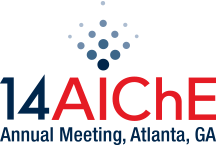

2,5-di-tert-butyl-1,4-bis(2-methoxyethoxy)benzene (DBBB) has been identified as a promising active species for non-aqueous redox flow batteries. However, the development and optimization of suitable electrolytes is still required to realize this promise. Given the breadth and diversity of non-aqueous electrolytes, combinatorial screening using automated platforms offers an efficient means of mapping out the design spaces.
Employing an automated electrolyte synthesis and characterization system, we study electrolytes consisting of DBBB, various alkali ion salts (LiBF4, LiPF6, LiTFSI, LiTf, NaBF4, and NaPF6) in carbonate-based (EC, PC, DEC, and DMC) or ether-based (DME, DOL, TEGDME, and DEGDME) solvents, with an overarching goal of improving DBBB solubility and ionic conductivity. Via this high-throughput approach, binary and ternary mixtures of linear and cyclic carbonates were found to improve both DBBB solubility and electrolyte conductivity, a marked improvement over the previously base case scenario (LiBF4/PC). A further improvement of the solubility of DBBB and the conductivity of the electrolyte was obtained using DME as the solvent. Moreover, in general, the addition of LiTFSI as a salt (or co-salt) was shown to improve DBBB solubility in electrolytes and the ionic conductivity of solutions.
Furthermore, based on the best combination in the corresponding carbonate- and ether- based electrolyte, the electrochemical behavior of DBBB at concentrations ranging from 5 mM (infinitely diluted solution) to the solubility limit (high-concentration solution) was systematically investigated using both 3 mm glassy carbon electrode and 11 μm carbon fiber microelectrode. The trend of key electrochemical parameters obtained here bridges the gap between electrochemical information of redox species at low concentration, which has been widely used to screen promising energy materials, and that at high concentration, which is directly relevant to the battery performance.
Aiming at the development of advanced electrolyte for non-aqueous redox flow batteries, this work demonstrates the archetype of the combination of the upstream screening work employing the automated, high throughput platform and the downstream validating work utilizing the electrochemical tools.
